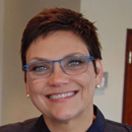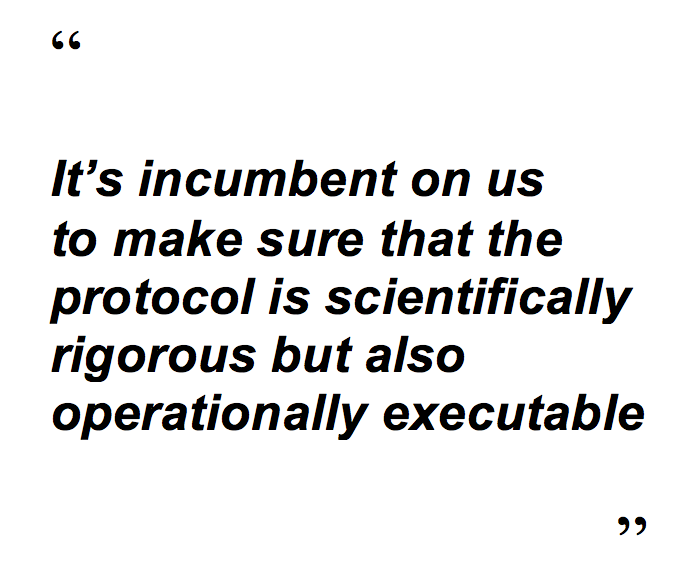Rare Disease Research: It Pays to Engage
With pursuits in rare and orphan disease beginning to move more into the drug development mainstream, the opportunities and challenges in patient engagement and trial execution for these conditions are ever-evolving, as one strategy expert in the field discusses.
Behind the momentum of precision medicine programs such as Cancer Moonshot, coupled with the overall shift taking place toward ultra-targeted treatments-gene therapy, immunotherapy, biologics-the rare disease space seems to be joining the rarefied air of more common disease segments in biopharma business pursuits.
After all, by 2020, the rare and orphan drug market is forecast to grab 20.2% of worldwide prescription drug sales (excluding generics) and total $178 billion in annual revenue. In the US, the FDA granted nearly double the number of orphan drug designations in 2015 compared to 2010, and through September, 24 orphan drugs had been approved this year. The demographics are well documented: rare diseases affect fewer than 200,000 patients, but, in aggregate, afflict as many as 350 million people worldwide-more than the total for cancer and AIDS combined. Children are especially impacted; about 35% of deaths in the first year of life are reportedly caused by these conditions.
But despite greater financial and regulatory incentives to develop drugs for rare diseases, plenty of caution remains. The low prevalence of these conditions still results in various challenges in development, pricing, and reimbursement. And with treatments usually requiring large per-patient payments, this area won’t be immune to the pricing scrutiny that continues to swarm the industry.
Juliet Moritz, executive director of strategic development in rare diseases for Premier Research, a CRO, has watched all these trends unfold with a close eye.
Juliet Moritz

Involved in clinical research for 28 years, with experience in single-site studies as well as large, multinational trials, Moritz is particularly passionate about informed consent and the role of patient advocacy involvement in clinical research. Applied Clinical Trials recently chatted with Moritz, where she discussed the challenges and opportunities unique to this specialty market-particularly related to growing focus areas such as patient engagement.
ACT: What approaches are getting the most attention right now in rare disease research? (Note: this interview took place prior to FDA's controversial approval in Duchenne muscular dystrophy.)
Moritz: We’re seeing more interest in lysosomal storage disorders. But, in general, we’re seeing a lot more focus on genetic conditions (80% of the estimated 7,000 rare diseases involve a genetic component). Now that the genome has been characterized, there’s a lot of work going on that’s relating a particular disease back to the genetics-the genotype and the phenotype. That brings us closer. Once we understand what the mutation is, we can then try to understand what’s going wrong. Is it a protein being misshapen or is it a protein not being produced at all? We’re finding conditions that are considered one condition but might have 10 or 12 different mutations that result in the same presentation of the disease.
We’re also seeing enzyme replacement therapy-for patients in which their disease results in the deficit of an enzyme or the creation of an enzyme that can’t cross the membrane. We’re seeing a lot more therapies that can address that-either replace the enzyme or chaperone the protein across.
ACT: What are some promising opportunities in patient recruitment for rare disease trials?
Moritz: To me, what’s very exciting is the fact that the regulatory agencies are really now paying a lot of attention to patient engagement. We’re seeing them go back to the pharma and biotech companies and specifically asking them, “what did you do in terms of patient engagement during your clinical development plan? Share that information with us.” We’ve seen some legislative changes as well.
It’s evolved, from when it used to be just putting a link about a study on a patient group’s website. Now it’s engaging in the protocol development, talking about meaningful endpoints and outcome measures. So that the protocols hopefully, over time, begin to reflect the day-to-day course of the disease and how it affects the patient, and in rare disease, often the family and caregivers.
ACT: Do you think the targeted patient engagement approach has been more effective amid advances in digital information tools?
Moritz: I think so. There are companies in our space-niche vendors-that are trying to leverage technologies by creating online communities for these patients. I’ve been in the business 28 years. Twenty-eight years ago, we didn’t have the Internet, we didn’t have Facebook, we didn’t have a place where a parent of a newly diagnosed child could go online and learn what resources are available. Now, if you look at almost every patient advocacy group, they’re talking about research in their disease state. They’re talking about clinical trials, and, in general, why people would want to participate in clinical trials. And depending on the therapeutic area and the target indication, they might even point people to specific trials.
The technology has been a significant boon. It doesn’t completely eliminate the challenges in patient recruitment. It’s still challenging because in some of these conditions you only have 1,000 or even just 2,000 people in the world that have them. You have to connect them to the places where the research is happening. But now it’s less of a “let me reach out and try to find somebody.” It’s more of a combination-we’re reaching out while they’re also reaching out to try to find opportunities to participate in research.
ACT: Are sponsors and CROs, in turn, more sensitive these days to the unique burden rare disease patients experience?
Moritz: That’s a big part of protocol development-reaching out to the advocacy groups and evaluating the protocol and determining, well, this might answer all of the scientific questions, but is it so onerous that we’re not going to be able to keep anybody in through the end?
As a CRO, we have to think what can we do to mitigate that burden so that we can enhance recruitment, but, more importantly, retention. Once someone’s in the study, we need to make sure we’re getting them through so that their effort turns out to be meaningful. It’s incumbent on us to make sure that the protocol is scientifically rigorous but also operationally executable, and not just thinking about what makes sense for us and the sponsor but for the patients and their families.
ACT: How do you go about including those considerations in the protocol?
Moritz: You build in as much as you can. Sometimes you only have a little bit of leeway depending on what the regulatory agencies want to see out of the protocol. But then you work around that to say, “alright, what can we do to support these patients and their families as they’re participating in this experience?” Is it

more timely reimbursement of expenses? is it working with the sites to make sure they can schedule these folks first thing in the morning if they’ve got a three-hour train ride, for example.
There’s no magic bullet, there’s no one answer. That’s the nice thing about having been involved in rare disease research for so long. You build a tool box basically of strategies and things that you could do. Not all of them are appropriate for every study, but having that depth of experience allows you to make more informed decisions on what might work.
ACT: Is the use of real-world data beneficial for trials in rare diseases? Is there enough data out there that could help?
Moritz: It’s not as comfortable a transition as in more prevalent disease research, that’s for sure. I think where big data might come into play is implementing strategies to try and identify lags in diagnoses. One of the challenges for a lot of people with rare diseases is that it could take quite a while to get a diagnosis. Are there other ways to characterize a patient’s profile as they’re going through their diagnostic arc? Is there any way we can shorten that up based on symptom and test information in medical records?
But right now I don’t see a lot of that happening in rare disease research where it translates into impacts in clinical trials.
ACT: What important caution would you advise companies interested in pursuing rare disease research?
Moritz: The regulatory pathways are compressed. You have a lot of what I call the slash studies: Phase I/II, Phase II/III. You have smaller patient populations; every single patient counts-and beyond that, every single data point counts. So the operational challenges are a little different. It’s really important to understand and be able to anticipate that. Because otherwise you can take a small company that’s got very limited resources, and if they go down the wrong path, they may not have an opportunity to reinvestigate that potential therapeutic.
ACT: What about the economic challenges that still exist in developing drugs for rare disease?
Moritz: On average, the cost per patient to study a drug in rare disease is often higher, largely because of operational issues. The trials are often spread out and have a lot of assessments-and when you’re bringing a patient to a clinic, you’re often bringing their entire family. It’s difficult to find control groups for some of these ultra-rare populations. So you have to be a little creative. Maybe you’re doing crossover studies.
It’s not as straightforward as Phase I, healthy volunteers; Phase II; Phase III; okay, we’re going to market. It’s not the same at all. It requires whomever you’re working with to be nimble and know the regulatory environment.
Improving Relationships and Diversifying the Site Selection Process
April 17th 2025In this episode of the Applied Clinical Trials Podcast, Liz Beatty, co-founder and chief strategy officer, Inato, discusses a number of topics around site engagement including community-based sites, the role of technology in improving site/sponsor relationships, how increased operational costs are impacting the industry, and more.
Behind the Buzz: Why Clinical Research Leaders Flock to SCOPE Summit
February 7th 2025In this episode, we meet with Micah Lieberman, Executive Conference Director for SCOPE Summit (Summit for Clinical Ops Executives) at Cambridge Innovation Institute. We will dive deep into the critical role of collaboration within the clinical research ecosystem. How do we bring together diverse stakeholders—sponsors, CROs, clinical trial tech innovators, suppliers, patients, sites, advocacy organizations, investors, and non-profits—to share best practices in trial design, program planning, innovation, and clinical operations? We’ll explore why it’s vital for thought leaders to step beyond their own organizations and learn from others, exchanging ideas that drive advancements in clinical research. Additionally, we’ll discuss the pivotal role of scientific conferences like SCOPE Summit in fostering these essential connections and collaborations, helping shape the future of clinical trials. Join us as we uncover how collective wisdom and cross-industry partnerships are transforming the landscape of clinical research.